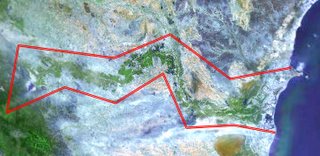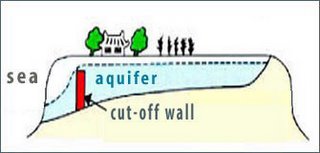Early on a Sunday morning I woke up hearing my mobile shouting the reminder. It was 7 AM and 7 of us at 70 kmph roared on mount road. Our destination: Satyam theater.
I am neither writing a review of the movie or explaining the story for I feel the best way to experience the masterpiece is to watch it for oneself. The movie is so complete, perfect at all angles like a sphere, that leaves me bewildered where to start.
I humbly agree, I’m not a movie buff, but this movie is very different in all perspectives, it’s introducing a very new concept in Tamil cinema. For those senile critics who lament the death of classical movies in Tamil industry, this is rejuvenation, a perfectly classical love story. But wait! Don’t retire with prejudice, this is yet again different in its genre and I’m here to explain it why.
If a movie with no villain, no hero – charisma building theme, no soap opera, no background motivating factor, no bottom line, no slapstick elements, no caricature and most importantly, no climax.. could make it to the big screen, then it’s definitely one and only Sillunu oru kaadhal.
Every frame in the movie is so complete and each one of it reflects the entire movie, its very complex to explain, it’s the hologram concept. Every moment blooms with love and the story elegantly sticks to its genre – romance.
I’m a person who wouldn’t fall too soon for any hero and after remaining for 20 years as a fan of nobody, it’s a puzzle when I retired as such an ardent fan of Surya. Certainly this magnificent role adds yet another feather to his hat as a rounded personality and as a classical actor. He performs so naturally, that we never feel he’s an actor; it’s like watching everything for real. Jyothika appears as the ‘goddess of beauty’ throughout the film. I don’t find words to describe her beauty, yet her matured acting and equanimous handling of the character surfeits it! The little ‘3 roses’ girl demonstrates acting to impeccability.
The roles for every character are perfectly tailored to consummacy; cinematography is unbeatable and the song ‘New York Nagaram’ would be a visual treat for any photographer other than being a dulcet. All the credit goes to the director Krishna, whom I’m not sure but my IAS friend confirmed to be a fresher. Definitely the best to debut into the celluloid world as a classical director amidst all those run of the mill commercial, frivolous, soporific fellows.
Relax!, I’m coming to the story. It’s actually quite complex to explain yet simple. It’s not kind of one where the Romeo runs the entire world around doing all impossible stunts for Joliet. It’s about love in a family amidst a couple. Wait, it’s not like Alaipayuthey depicting everyday complications, but revolves on a more serious theme, faith and relentless love.
What leaves me dumbfounded is the reality of the movie; definitely the odd mad out of Kollywood, it plays romance and love with utmost reality. In an era where big budget movies thrive on infidelity, this one which is about ultimate faith & supreme love in a family shines like a ‘lotus out of gutter’.
The entire movie shows a nuclear family satiated with unconditional love, affection, passion with so much reality; something what everyone would ache for. It is a movie which wouldn’t get outdated – typically a classical trait – one which the entire family can kick back and enjoy on a Sunday afternoon.
If only I get a chance, I would request the censor board to display the warning “ If you are in love and broke up, don’t watch this film” for there is a greater possibility that you might break into tears every frame for it shows love at its best – in a family.
Although my friends were a little disappointed with Vadivel and the Sakala Vs Ragala guy doing only cameos, I feel this movie sports the best way to bring out laughter out of audience – with decent humour interlaced with storyline – in everyday events – by the protagonists – typically a classical trait. I see this ability of obviating farce elements only in this director after the maestro Mani Rathnam. The music – it’s AR Rahman the ‘Mozarat of Mardas’ – at one of his masterpieces in melody.
I look forward a chance to meet the director for he, in this beautiful work which shows the practical way for eternal bliss in married life – in just the way I believed – through paramount faith, respect and unconditional love – the quintessence of Tamil culture.
My heartfelt wishes for my Surya and Jyothika (my vote as the best actress) without whom this movie wouldn’t exist, for a married life, simply the way they relished in Sillunu Oru Kaadhal.
All is said well, but the acceptance of this movie as a block buster is dubious as not many were enjoying it in the theatre. An era in which stereotyped storyline, spicy cosmetic heroism, unrealistic themes, infidelity, gaudy glamour, farce humour, vulgarity and violence only deem the throne, it becomes apparent that this beautiful classical work is destined a turbulent career; a clear harbinger for the death of classics in culture. What a pitiable fact.
I am neither writing a review of the movie or explaining the story for I feel the best way to experience the masterpiece is to watch it for oneself. The movie is so complete, perfect at all angles like a sphere, that leaves me bewildered where to start.
I humbly agree, I’m not a movie buff, but this movie is very different in all perspectives, it’s introducing a very new concept in Tamil cinema. For those senile critics who lament the death of classical movies in Tamil industry, this is rejuvenation, a perfectly classical love story. But wait! Don’t retire with prejudice, this is yet again different in its genre and I’m here to explain it why.
If a movie with no villain, no hero – charisma building theme, no soap opera, no background motivating factor, no bottom line, no slapstick elements, no caricature and most importantly, no climax.. could make it to the big screen, then it’s definitely one and only Sillunu oru kaadhal.
Every frame in the movie is so complete and each one of it reflects the entire movie, its very complex to explain, it’s the hologram concept. Every moment blooms with love and the story elegantly sticks to its genre – romance.
I’m a person who wouldn’t fall too soon for any hero and after remaining for 20 years as a fan of nobody, it’s a puzzle when I retired as such an ardent fan of Surya. Certainly this magnificent role adds yet another feather to his hat as a rounded personality and as a classical actor. He performs so naturally, that we never feel he’s an actor; it’s like watching everything for real. Jyothika appears as the ‘goddess of beauty’ throughout the film. I don’t find words to describe her beauty, yet her matured acting and equanimous handling of the character surfeits it! The little ‘3 roses’ girl demonstrates acting to impeccability.
The roles for every character are perfectly tailored to consummacy; cinematography is unbeatable and the song ‘New York Nagaram’ would be a visual treat for any photographer other than being a dulcet. All the credit goes to the director Krishna, whom I’m not sure but my IAS friend confirmed to be a fresher. Definitely the best to debut into the celluloid world as a classical director amidst all those run of the mill commercial, frivolous, soporific fellows.
Relax!, I’m coming to the story. It’s actually quite complex to explain yet simple. It’s not kind of one where the Romeo runs the entire world around doing all impossible stunts for Joliet. It’s about love in a family amidst a couple. Wait, it’s not like Alaipayuthey depicting everyday complications, but revolves on a more serious theme, faith and relentless love.
What leaves me dumbfounded is the reality of the movie; definitely the odd mad out of Kollywood, it plays romance and love with utmost reality. In an era where big budget movies thrive on infidelity, this one which is about ultimate faith & supreme love in a family shines like a ‘lotus out of gutter’.
The entire movie shows a nuclear family satiated with unconditional love, affection, passion with so much reality; something what everyone would ache for. It is a movie which wouldn’t get outdated – typically a classical trait – one which the entire family can kick back and enjoy on a Sunday afternoon.
If only I get a chance, I would request the censor board to display the warning “ If you are in love and broke up, don’t watch this film” for there is a greater possibility that you might break into tears every frame for it shows love at its best – in a family.
Although my friends were a little disappointed with Vadivel and the Sakala Vs Ragala guy doing only cameos, I feel this movie sports the best way to bring out laughter out of audience – with decent humour interlaced with storyline – in everyday events – by the protagonists – typically a classical trait. I see this ability of obviating farce elements only in this director after the maestro Mani Rathnam. The music – it’s AR Rahman the ‘Mozarat of Mardas’ – at one of his masterpieces in melody.
I look forward a chance to meet the director for he, in this beautiful work which shows the practical way for eternal bliss in married life – in just the way I believed – through paramount faith, respect and unconditional love – the quintessence of Tamil culture.
My heartfelt wishes for my Surya and Jyothika (my vote as the best actress) without whom this movie wouldn’t exist, for a married life, simply the way they relished in Sillunu Oru Kaadhal.
All is said well, but the acceptance of this movie as a block buster is dubious as not many were enjoying it in the theatre. An era in which stereotyped storyline, spicy cosmetic heroism, unrealistic themes, infidelity, gaudy glamour, farce humour, vulgarity and violence only deem the throne, it becomes apparent that this beautiful classical work is destined a turbulent career; a clear harbinger for the death of classics in culture. What a pitiable fact.




